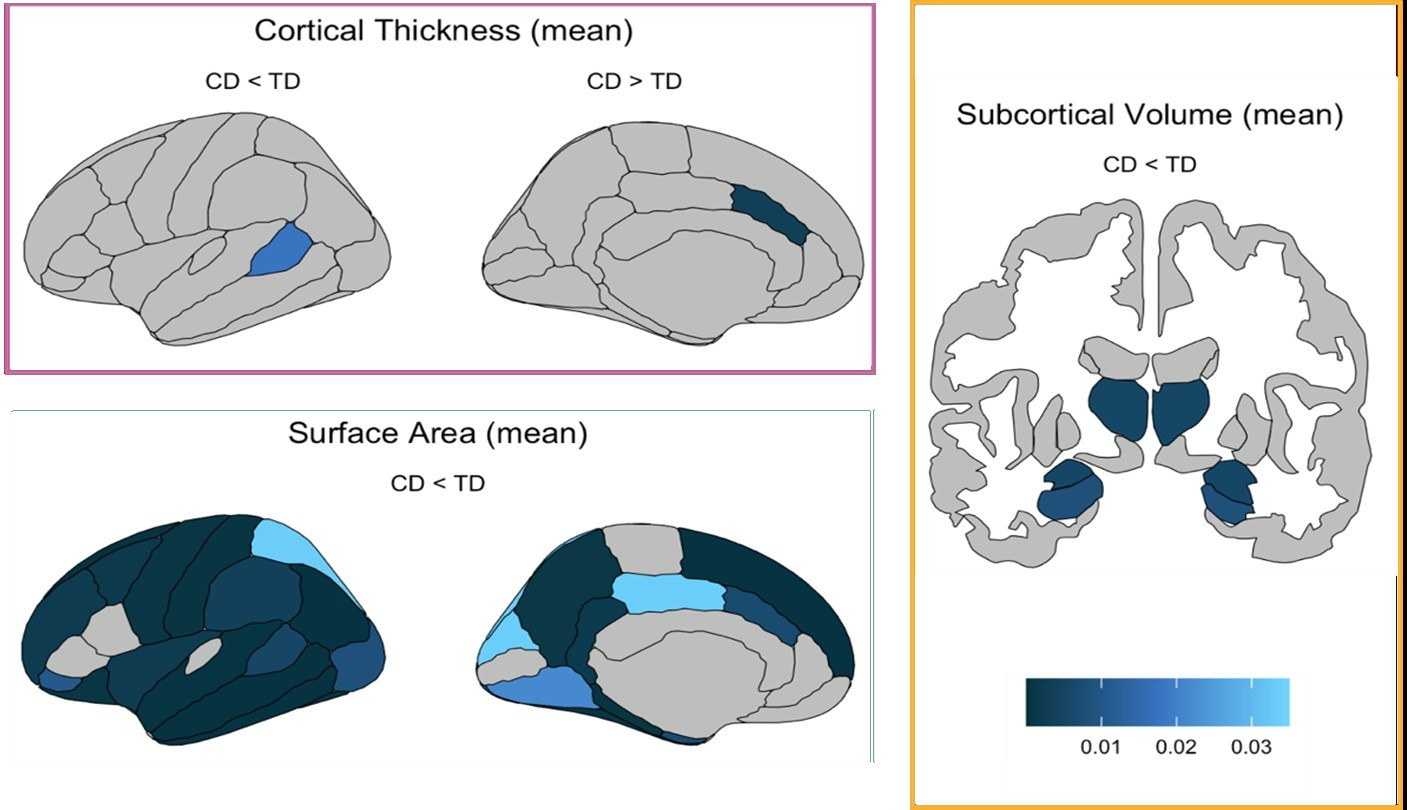Youth with conduct disorder show widespread differences in brain structure

🌈 Abstract
The article discusses a neuroimaging study that examined brain structural differences between youth with and without conduct disorder. The key findings include:
- Youth with conduct disorder had lower total surface area across the cerebral cortex and in 26 of 34 individual regions, as well as lower volume in several subcortical brain regions like the amygdala, hippocampus, and thalamus.
- These brain differences were seen across conduct disorder subgroups based on age of onset and level of prosocial traits, with the most pronounced changes in youth exhibiting a more severe form of the disorder characterized by low empathy, guilt, and remorse.
- The findings suggest that conduct disorder is associated with widespread structural brain changes, providing new avenues for investigating causal links between brain structure and disorder symptoms, as well as targeting brain regions for improved diagnosis and treatment.
🙋 Q&A
[01] Brain Structural Differences in Conduct Disorder
1. What were the key brain structural differences found between youth with and without conduct disorder?
- Youth with conduct disorder had:
- Lower total surface area across the cerebral cortex and in 26 of 34 individual cortical regions
- Lower cortical thickness in 2 regions
- Lower volume in several subcortical brain regions, including the amygdala, hippocampus, and thalamus
2. How did the brain differences relate to conduct disorder severity?
- Youth exhibiting a more severe form of conduct disorder, characterized by low empathy, guilt, and remorse, showed the greatest number of brain changes.
3. Were the brain differences consistent across different conduct disorder subgroups?
- Yes, the associations with brain structure did not differ between boys and girls, and were seen across conduct disorder subgroups based on age of onset and level of prosocial traits.
[02] Implications and Next Steps
1. What are the potential implications of the study's findings?
- The findings offer new avenues for investigating causal links between brain structure and conduct disorder symptoms, as well as targeting brain regions as part of clinical efforts to improve diagnosis and treatment.
2. What are the critical next steps identified by the researchers?
- Following children over time to determine if the observed brain differences are a cause or consequence of living with conduct disorder.
Shared by Daniel Chen ·
© 2024 NewMotor Inc.